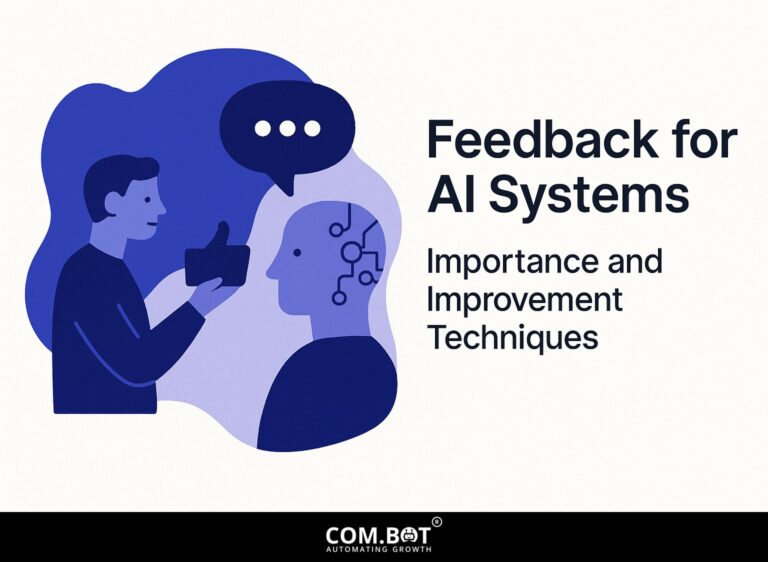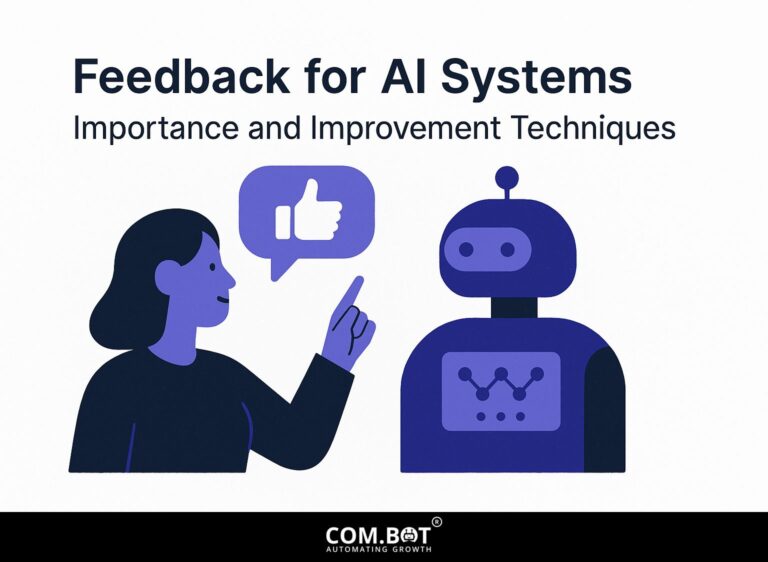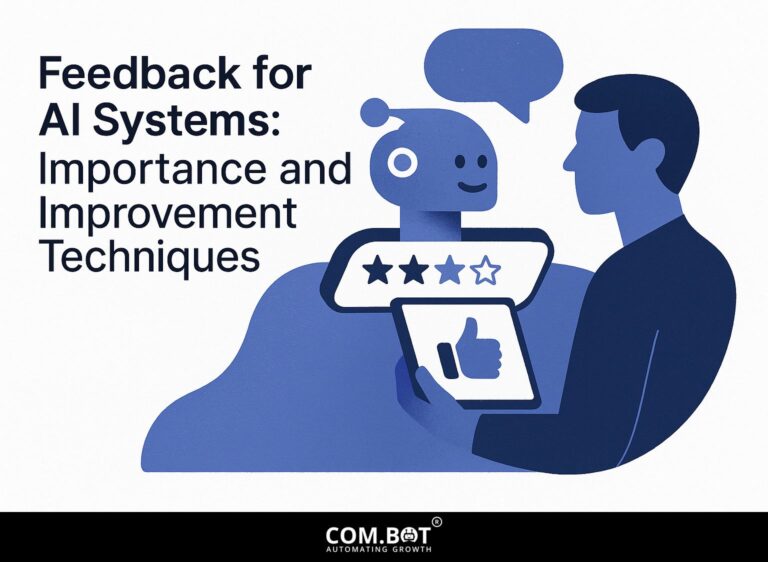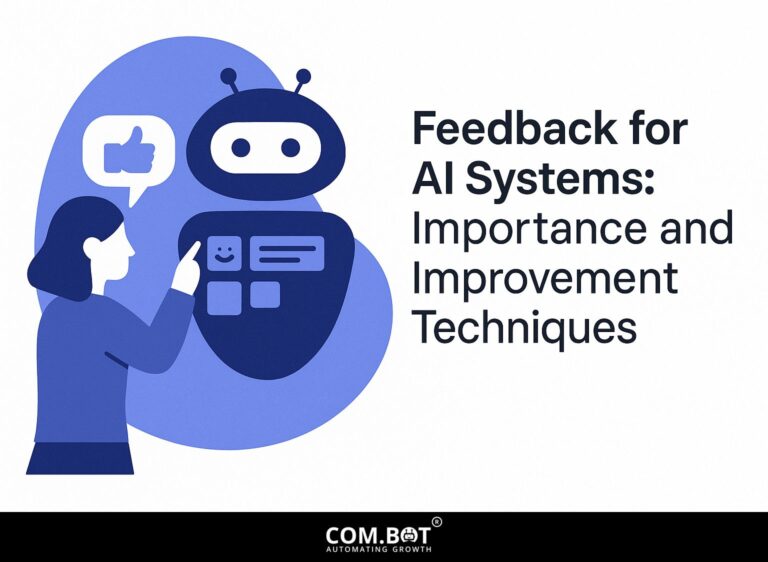Feedback for AI Systems: Importance and Improvement Techniques
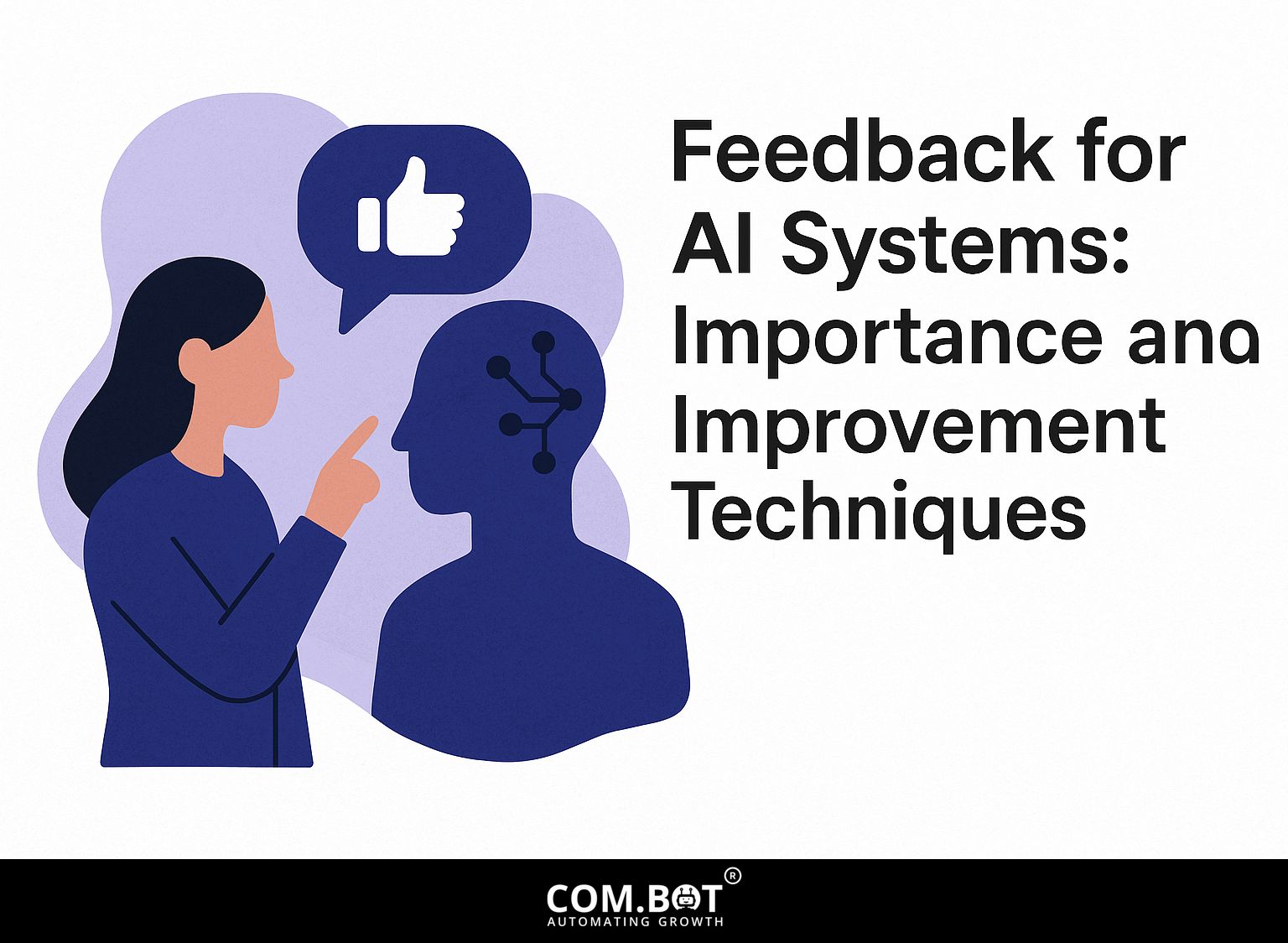
In the changing field of artificial intelligence, human feedback is important for developing efficient machine learning systems. Using methods such as Reinforcement Learning with Human Feedback (RLHF), we can develop strong feedback systems that improve model accuracy and increase user satisfaction. This article discusses the importance of feedback in AI, looks at different ways to make improvements, and shows how human input can lead to more ethical and efficient AI solutions.
Key Takeaways:
- 1 Importance of Feedback
- 2 Types of Feedback Mechanisms
- 3 Techniques for Gathering Feedback
- 4 Implementing Feedback for Improvement
- 5 Challenges in Feedback Implementation
- 6 Future Trends in Feedback Mechanisms
- 7 AI Feedback Systems Impact in Recruitment 2024
- 8 Frequently Asked Questions
- 8.1 What is the importance of feedback for AI systems?
- 8.2 How does feedback help in improving AI systems?
- 8.3 What are some techniques for providing feedback to AI systems?
- 8.4 Why is it important to use diverse sources of feedback for AI systems?
- 8.5 How can feedback be used to detect and correct biases in AI systems?
- 8.6 What are the potential consequences of not providing feedback to AI systems?
Definition and Scope
Feedback in AI is the information given to learning algorithms. It helps make their results better and ensures they meet user needs.
Feedback matters in reinforcement learning since algorithms improve by making mistakes and learning from those mistakes.
For example, in OpenAI’s models, user interactions provide critical data that shapes responses and improves accuracy over time. When users report wrong results, the model uses this feedback to update how it makes decisions.
Tools like TensorFlow and PyTorch facilitate this learning by allowing developers to implement feedback loops seamlessly, enhancing algorithm performance based on real-world application and user input.
Historical Context
AI feedback methods have seen major developments, especially with supervised learning and reinforcement learning approaches introduced in the 1990s.
In the late 1990s, algorithms such as Support Vector Machines appeared, which used labeled data to help with classification tasks.
In the early 2000s, deep learning started, with structures like CNNs (Convolutional Neural Networks) using many feedback loops to make image recognition better.
More recently, reinforcement learning systems, like Deep Q-Networks, use immediate feedback from their surroundings, allowing them to figure out the best moves by trying different options and learning from mistakes.
Regularly including feedback has greatly improved AI skills, leading to progress in different uses.
Importance of Feedback
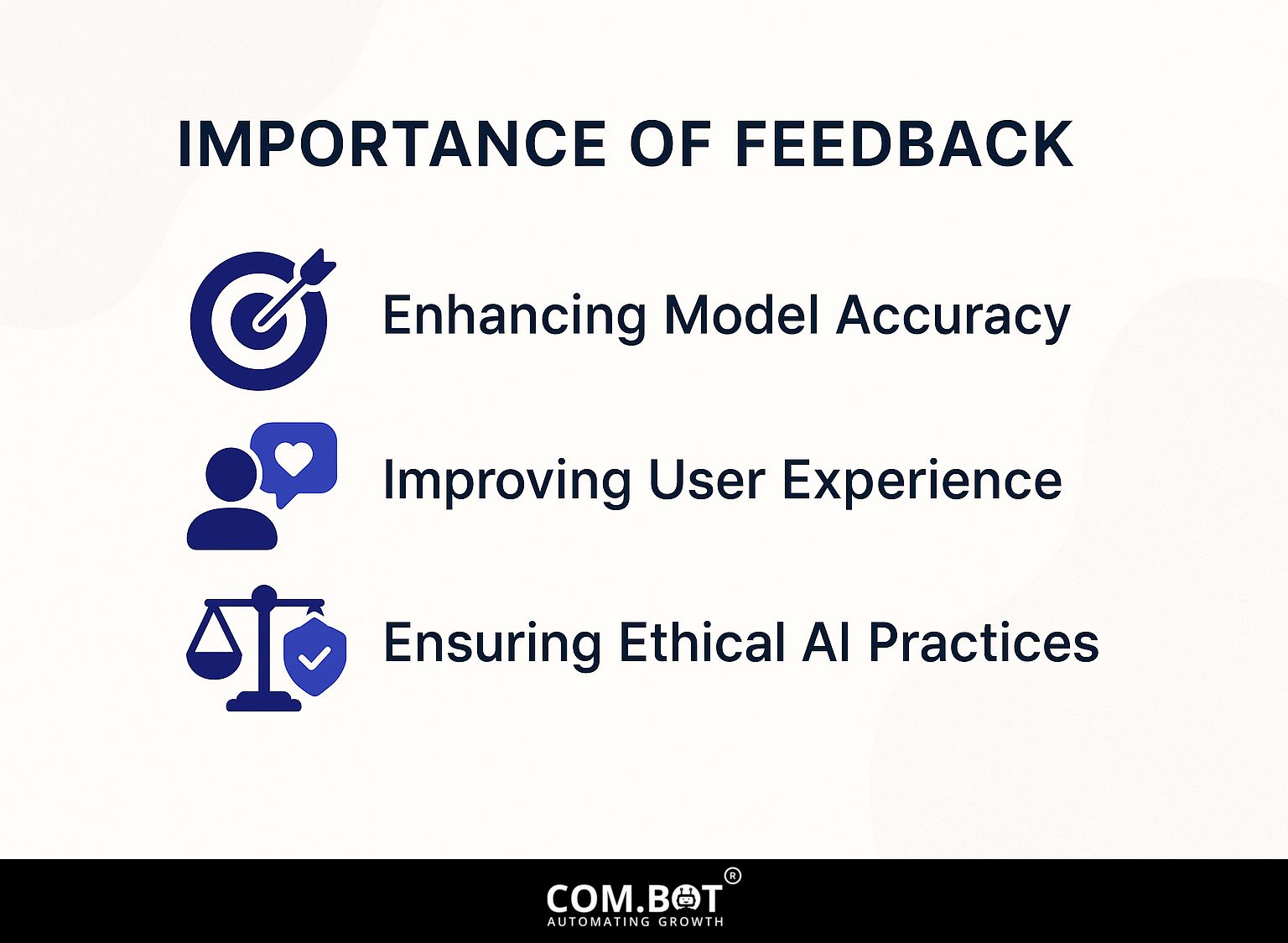
Feedback systems are important in AI because they help models work better, increase user satisfaction, and uphold ethical standards in AI use. To understand the significance and improvement techniques of these systems, you might want to explore our in-depth look at feedback for AI systems.
Enhancing Model Accuracy
Regular feedback can improve model accuracy by as much as 30%, as seen in cases where real-time data is integrated into training cycles.
To effectively use feedback, consider trying Label Studio for data labeling. This tool allows you to collect accurate opinions from individuals reviewing the data.
Use A/B testing to evaluate model performance with and without feedback, concentrating on measures like accuracy and data retrieval quality.
For example, a machine learning project at XYZ Corp improved accuracy by 25% after six rounds of feedback were added.
By regularly improving the model with data from users, organizations can make their model more dependable and useful as time goes on.
Improving User Experience
User satisfaction ratings can go up by 50% with good feedback processes.
Slack improved its interface by using user surveys and feedback forms. They used tools like Typeform and UserTesting to collect feedback from thousands of users.
Slack listened to feedback and made it easier to use, cutting the time it takes to start using it by 40%. Dropbox adopted a similar method, weaving user feedback directly into their design process, resulting in a 30% uptick in retention rates.
Frequently checking these feedback channels can greatly improve how easy the product is to use and how happy users are with it.
Ensuring Ethical AI Practices
Including feedback systems is essential for spotting and reducing biases, ensuring ethical AI practices.
Companies like Amazon and GitHub demonstrate the effectiveness of feedback loops in refining their AI systems.
For example, Amazon collects user comments about how Alexa works. This helps engineers fix problems like when Alexa misinterprets different accents or speech patterns.
GitHub uses feedback from users to make Copilot better, focusing on removing gender bias by modifying training data and including different viewpoints.
These strategies improve the accuracy of AI models and support a fair and inclusive setting.
Types of Feedback Mechanisms
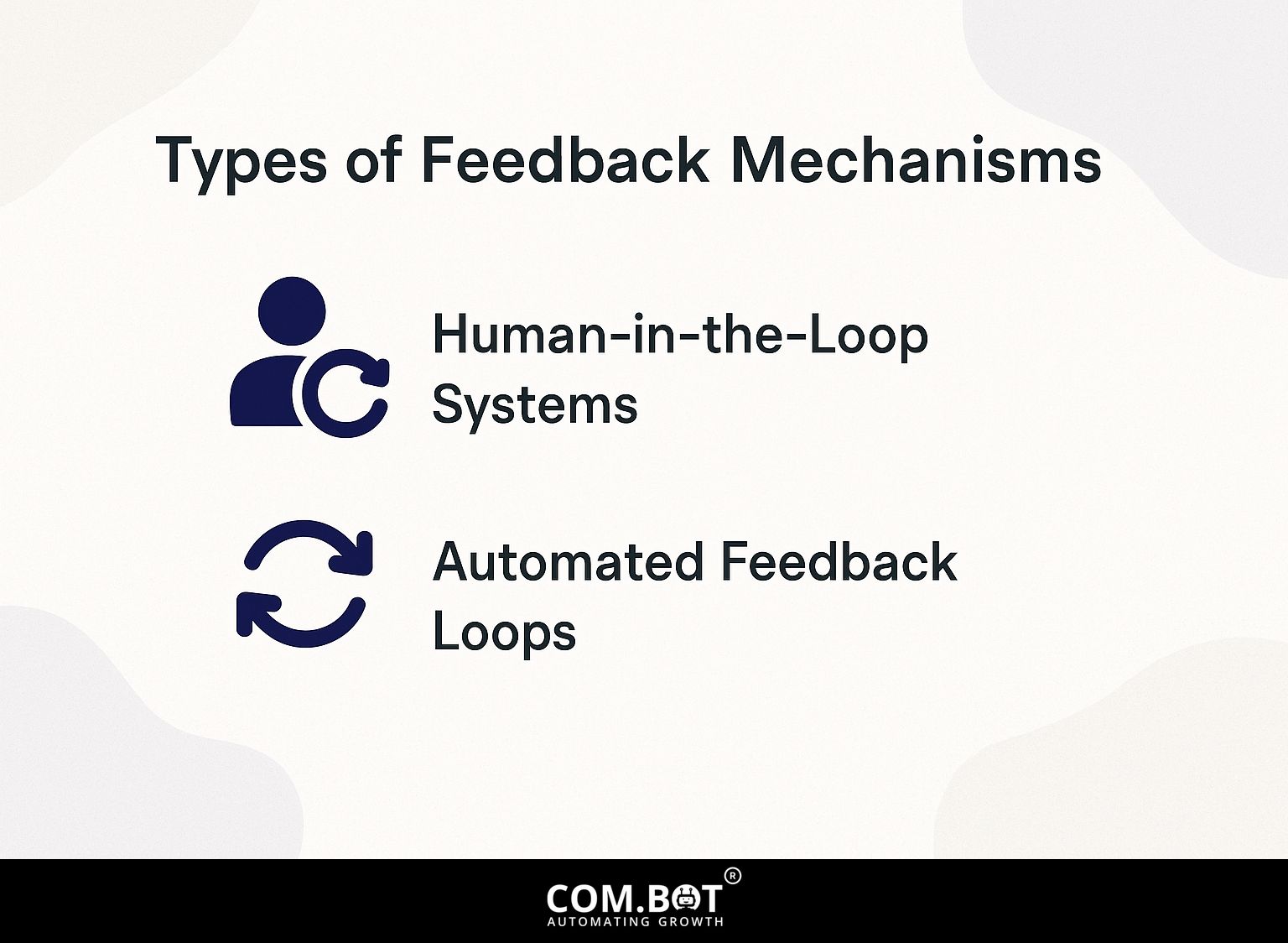
AI systems use different methods for feedback, including those with human involvement and those that work on their own. To better understand these mechanisms, consider the importance and techniques for improving AI feedback systems which are crucial in refining AI performance.
Human-in-the-Loop Systems
Human-in-the-loop systems integrate human feedback into AI processes, significantly enhancing the learning process and reducing the risk of errors.
This method employs tools like Amazon SageMaker Ground Truth, which allows human annotators to review AI predictions and provide corrections.
In sentiment analysis, human reviewers can evaluate and improve the AI’s grasp of the subtleties in language.
Platforms like Labelbox provide immediate feedback that helps in gradually improving models.
When people interact with the model, it improves in accuracy and matches what they want, resulting in more satisfied users.
Automated Feedback Loops
Automatic feedback systems use machine learning to regularly check performance data and change models immediately.
These systems excel in various applications, such as real-time monitoring in manufacturing and customer service.
In a factory, sensors can monitor how well machines are working and automatically make changes to operations without needing people to step in. In customer service, chatbots analyze user interactions, refining responses based on feedback.
By implementing these loops, organizations can scale operations rapidly while enhancing efficiency.
Well-known tools like TensorFlow and PyTorch help create these systems, allowing easier setup of machine learning processes that change with new data.
Techniques for Gathering Feedback
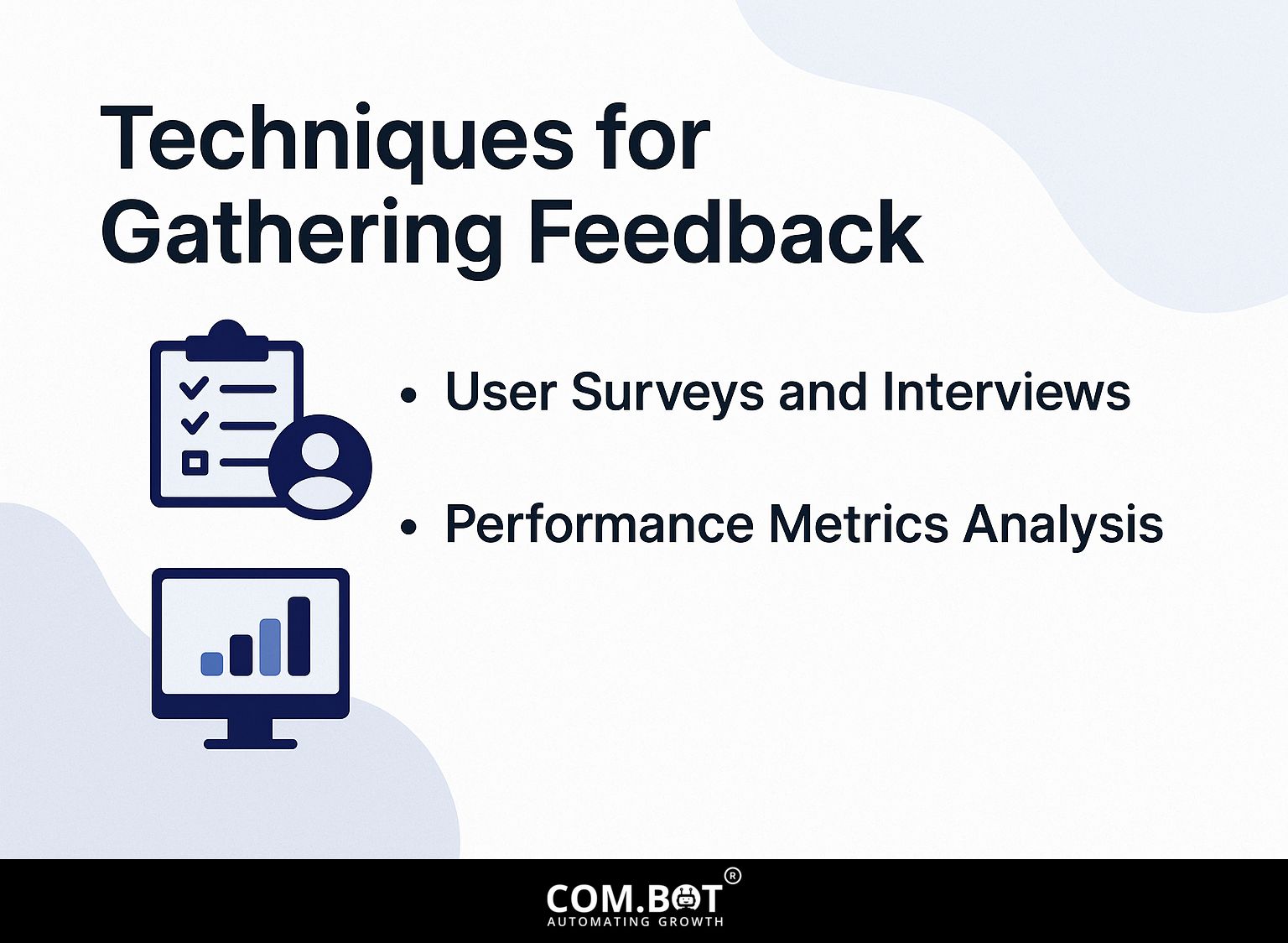
Collecting feedback well depends on methods like user surveys and studying performance data to fully grasp the situation. Related insight: Feedback for AI Systems: Importance and Improvement Techniques offers a deeper look into advanced strategies for gathering and utilizing feedback effectively.
User Surveys and Interviews
Research shows that organizing interviews makes people 40% more likely to give feedback in user surveys.
To create effective user surveys, start by selecting a tool such as SurveyMonkey or Google Forms. Both are easy to use and good for analyzing data.
Ask open-ended questions like “Which features do you like the most?” or “What problems have you encountered while using our product?” These questions help identify areas that need improvement.
Keep your survey short, with no more than 10 questions. Share it through different methods like email newsletters and social media to increase the number of people who see and answer it.
Performance Metrics Analysis
Performance metrics analysis provides quantifiable data that drives feedback loops, enhancing model adjustments and user satisfaction metrics.
To effectively analyze performance metrics, consider using Tableau to create visualizations that highlight trends and anomalies.
Focus on key metrics such as:
- User engagement (measured by time on site and bounce rate)
- Conversion rates
- Customer satisfaction scores
For instance, set up dashboards to track these metrics weekly, enabling quick identification of areas needing improvement. Using results from A/B testing helps to clearly understand which changes improve user behavior.
This organized method helps make decisions based on data that consistently improve user experiences.
Implementing Feedback for Improvement
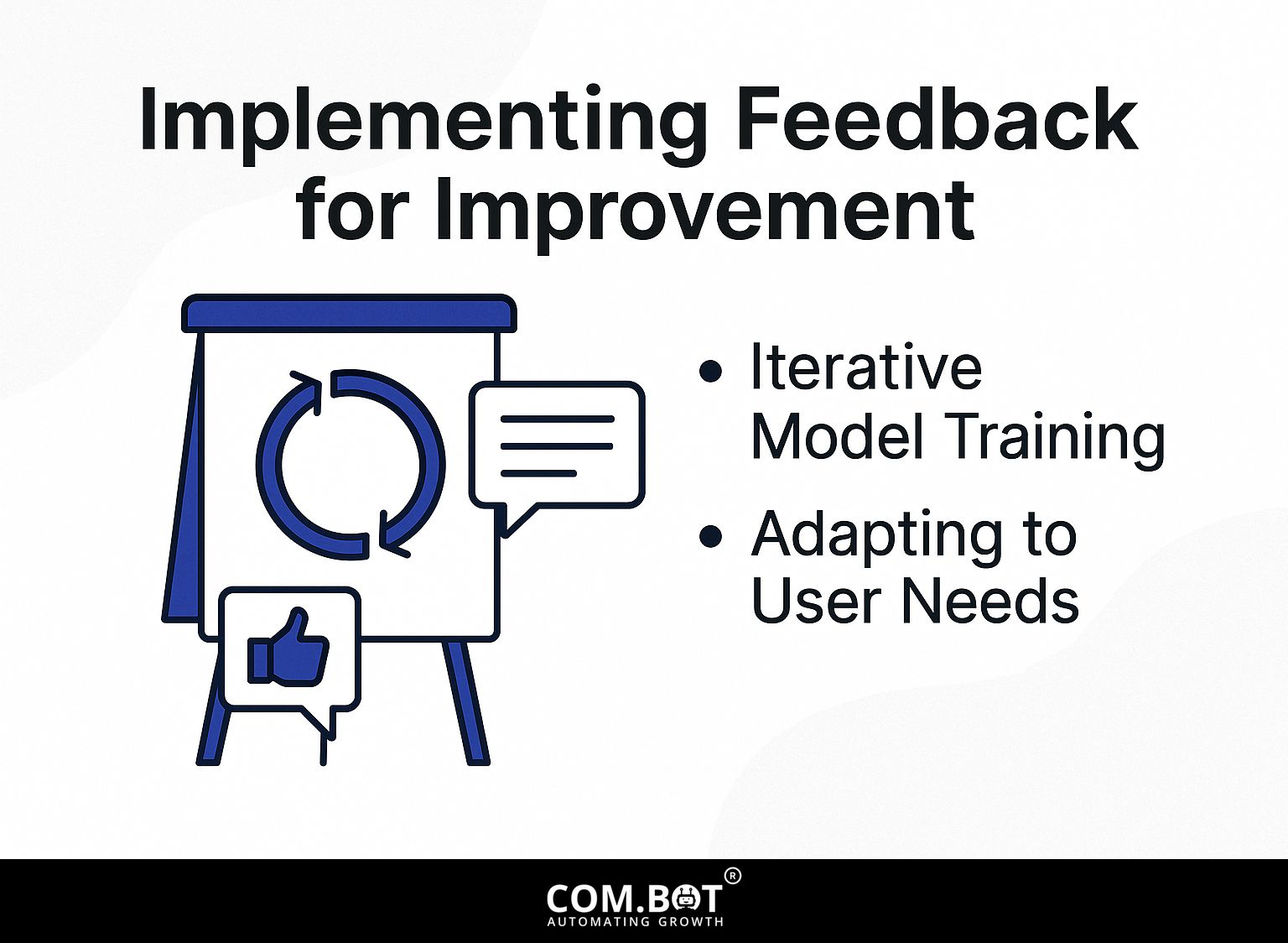
Using feedback helps AI models keep getting better, often resulting in better performance and happier users.
Iterative Model Training
Repeatedly training models with feedback can reduce the required time by 50%, making models faster.
One case study involving a natural language processing model demonstrated significant improvements by incorporating user feedback at each training stage. Initially, we reviewed model results each week. As feedback increased, changes were made daily, leading to better results within a month.
Tools like TensorFlow and PyTorch make it easier to change the model setup during repeated updates. By frequently reviewing and adjusting, teams can find the most effective model settings, leading to more accurate results.
Adapting to User Needs
AI systems that modify according to user feedback can increase engagement rates by up to 60% because they align more closely with user preferences.
To put feedback systems in place effectively, think about using tools like Microsoft Azure’s Machine Learning for analyzing data instantly, or Google Analytics to understand how users behave.
Netflix improves its recommendation system by analyzing user ratings and viewing history to provide a custom experience.
Businesses using chatbots like Drift can improve their responses by learning from conversation data over time. Ensuring regular updates based on this feedback loop encourages continuous improvement and keeps users engaged with the platform.
Challenges in Feedback Implementation
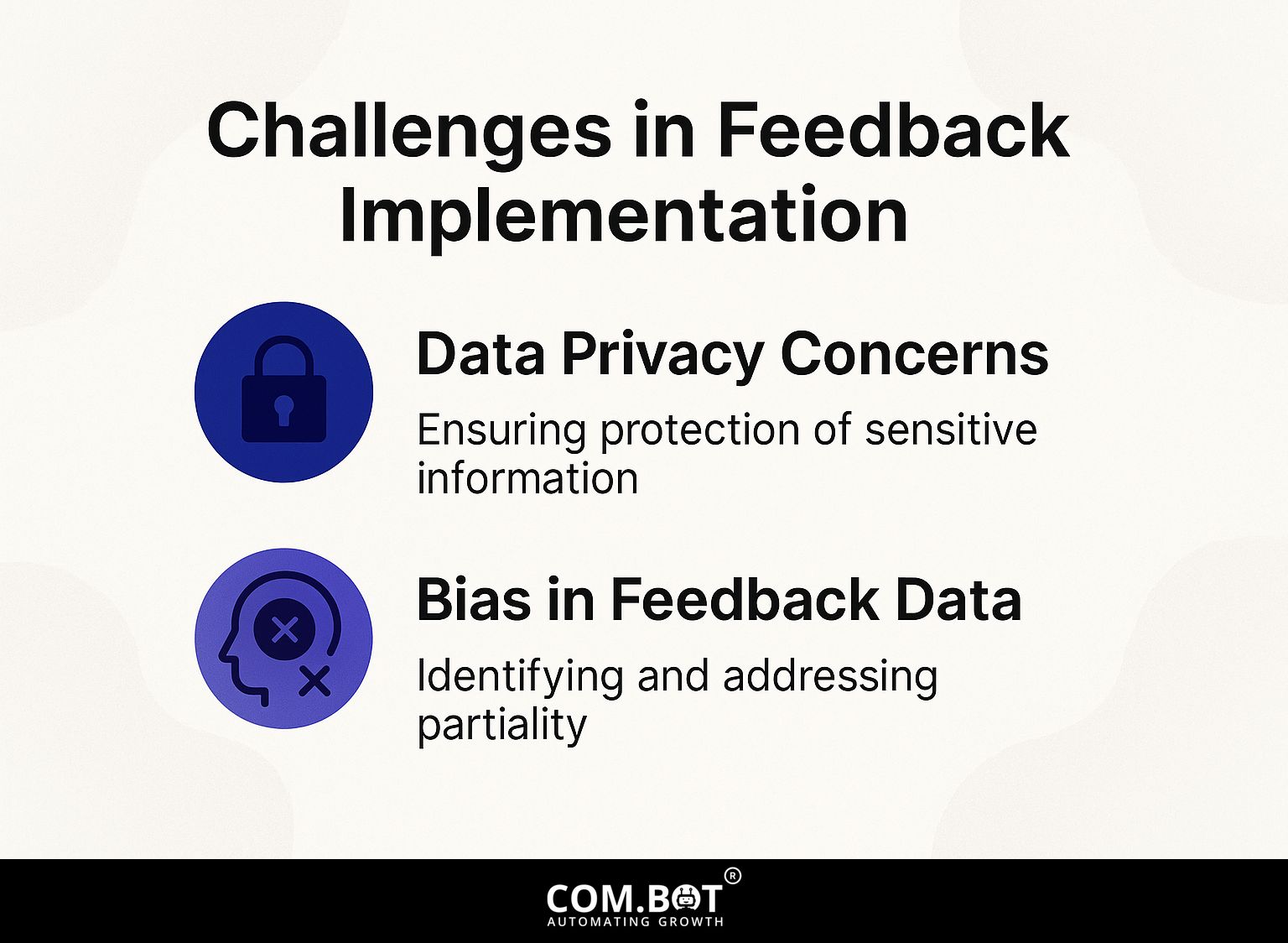
Even though it has advantages, using feedback in AI systems faces obstacles, especially with data privacy and possible biases in the feedback data. As mentioned in the discussion on feedback importance and improvement techniques, addressing these challenges is crucial for enhancing system reliability and performance.
Data Privacy Concerns
Data privacy concerns can hinder effective feedback implementation, as 70% of users are wary of how their data is used.
To address these issues, organizations should implement transparent data protection strategies. Begin by carefully reviewing how data is collected to make sure it follows laws such as GDPR.
This includes informing users about how their data will be used through clear privacy policies. Use anonymization tools such as Data Masker or Ground Labs to safeguard identities. Regularly review feedback channels and train staff on data handling to reinforce a culture of privacy.
Engaging users with opt-in choices also builds trust, encouraging more meaningful feedback.
Bias in Feedback Data
Bias in feedback data can lead to skewed AI outcomes, emphasizing the importance of identifying and mitigating cognitive biases in the feedback loop.
Industries such as healthcare, finance, and hiring are particularly vulnerable to biased outcomes. For instance, if a healthcare AI is trained predominantly on data from one demographic, it might underperform for others.
To mitigate bias, organizations can employ strategies like diverse data collection, ensuring feedback represents varied demographics. Regularly auditing AI systems using tools like Fairness Indicators or AIF360 can help detect and correct biases.
Including feedback from a team with various skills can improve the AI’s knowledge, resulting in fairer and better results.
Future Trends in Feedback Mechanisms
As AI technology progresses, feedback processes are getting more advanced, indicating a move towards systems that learn on their own. Understanding the core principles of feedback mechanisms is crucial for optimizing AI systems effectively.
AI Feedback Systems Impact in Recruitment 2024
Curious about how these systems are enhanced? Our analysis explains the key factors involved in improving feedback mechanisms for AI.
AI Feedback Systems Impact in Recruitment 2024
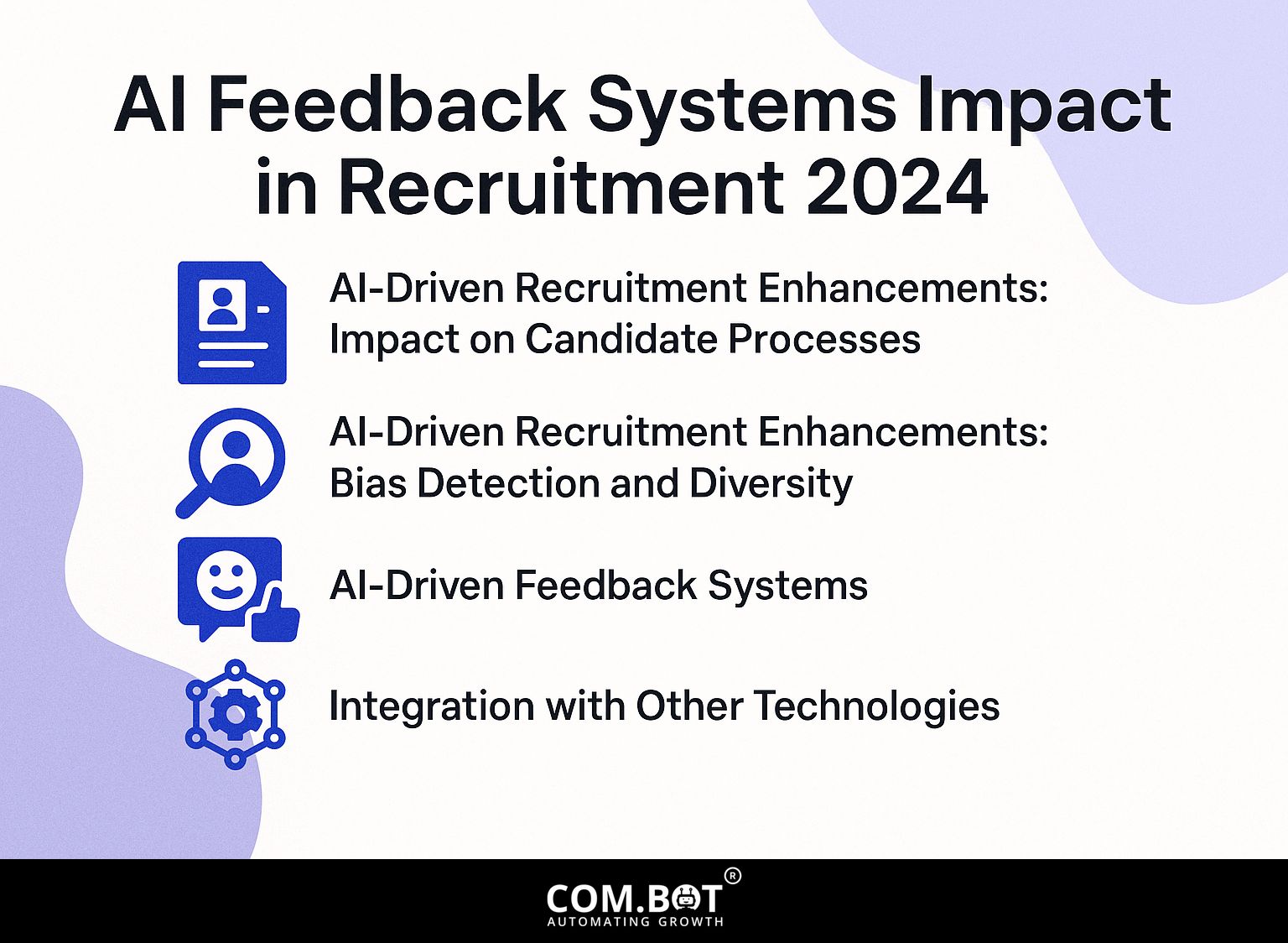
Improving Hiring with AI: Effects on Candidate Procedures
Improving Recruitment with AI: Identifying Bias and Promoting Diversity
The AI Feedback Systems Impact in Recruitment 2024 shows how AI changes hiring by improving how companies connect with job seekers, finding better job matches, making assessments quicker, and encouraging a wider range of applicants. This data shows how AI systems are changing hiring methods for improved outcomes.
AI-Driven Recruitment Enhancements demonstrate substantial improvements in various aspects of candidate handling. A notable 30% reduction in candidate drop-off rates indicates that AI systems are effectively engaging candidates, providing timely feedback, and streamlining application processes to maintain their interest. Moreover, the 25% increase in job match accuracy through skill gap analysis highlights AI’s ability to match candidates with positions that fit their qualifications and experience, enhancing overall job satisfaction and retention.
- The recruitment process also benefits from a 25% growth in the qualified candidate pool AI can find good candidates from a wide range, increasing the pool of talent available to companies.
- A significant 40% reduction in assessment time demonstrates AI’s ability to quickly assess candidate qualifications and abilities, shortening the hiring process and helping companies fill jobs fast.
Bias Detection and Diversity metrics show AI’s role in supporting fair hiring processes. The 68% reduction in unconscious bias Shows AI’s ability to find and reduce biases that may affect hiring, creating an equal and welcoming setting. With a 22.5% increase in diverse hires, AI systems contribute to building workforce diversity by ensuring that recruitment processes focus on candidate qualifications and competencies, rather than subjective biases.
Overall, using AI feedback systems in hiring improves how smoothly the process runs, makes the experience better for applicants, and increases variety in the workforce. By increasing involvement, precision, speed, and fairness, these systems play an essential role in updating hiring methods to meet changing business requirements and community standards.
AI-Driven Feedback Systems
Feedback systems powered by AI use machine learning to adjust instantly, greatly enhancing how AI applications respond.
These systems often use predictive analytics, helping businesses anticipate customer needs and change their support processes as needed.
Platforms like Zendesk and Salesforce use AI to study previous interactions, helping support teams to focus on important solutions and reply more quickly.
By studying customer emotions with tools like IBM Watson, companies can make their communication plans better, which helps them do well.
This proactive method improves how happy customers are and uses resources better, leading to smoother operations.
Integration with Other Technologies
Combining feedback systems with technologies like IoT and data analytics allows for better monitoring methods in AI applications.
For example, using IoT sensors along with machine learning programs provides real-time feedback from devices, allowing exact changes to processes.
Companies like GE use this connection for predicting maintenance needs, checking data from turbines to anticipate problems and cut down on idle time.
Platforms such as Microsoft Azure provide powerful analytics tools that help businesses evaluate their performance and collect user feedback quickly.
Collaborating leads to better decisions and sparks creativity, making work more successful in various fields.
Frequently Asked Questions
What is the importance of feedback for AI systems?
Feedback is essential for AI systems because it helps them keep learning and get better at what they do. Without feedback, AI systems would not adjust to new situations or make better decisions.
How does feedback help in improving AI systems?
Feedback helps in identifying and correcting errors, biases, and inconsistencies in AI systems. When AI systems get feedback, they can keep adjusting their algorithms to become more accurate and work better.
What are some techniques for providing feedback to AI systems?
Some techniques for providing feedback to AI systems include using human input, incorporating real-time data, and implementing reinforcement learning. These methods allow for direct feedback and can help AI systems improve their performance quickly.
Why is it important to use diverse sources of feedback for AI systems?
Using various sources of feedback, like different kinds of information and input from several people, can help AI systems lower biases and make better decisions. This is particularly important in areas where AI systems may have a significant impact, such as in hiring or healthcare.
How can feedback be used to detect and correct biases in AI systems?
Feedback can be used to identify and correct biases in AI systems by flagging patterns of discrimination and providing alternative data or input to counter these biases. By continuously receiving feedback, AI systems can learn to make fair and unbiased decisions.
What are the potential consequences of not providing feedback to AI systems?
The consequences of not providing feedback to AI systems can include a decrease in accuracy and efficiency, as well as the perpetuation of biases and errors. Without feedback, AI systems may struggle to handle new situations and may keep making mistakes.


